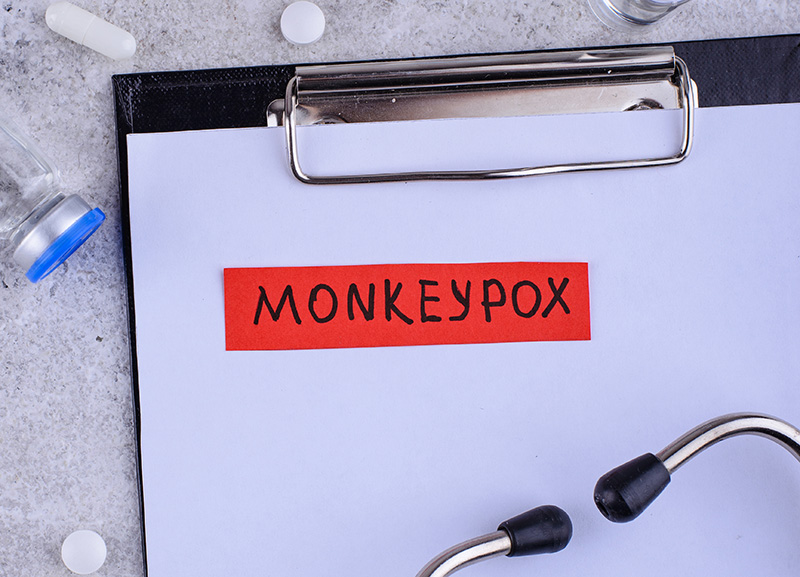Monkeypox is caused by the monkeypox virus. Monkeypox can make individuals sick including a rash or sores (pox), often accompanied by earlier flu-like symptoms. Most infected people, unless they have complications, experience mild symptoms and do not require hospitalization.
Monkeypox can spread to anyone through close or skin-to-skin contact, including:
This contact can happen during sexual contact including:

People with monkeypox get a rash that may be located on or near the genitals (penis, testicles, labia, and vagina) or anus (butthole) and could be on other areas like the hands, feet, chest, face, or mouth.
Other symptoms of monkeypox can include:
You may experience all or only a few symptoms
The Centers for Disease Control and Prevention (CDC) released new isolation guidance for individuals with monkeypox as well as guidance for positive patients to prevent further spread. If you have monkeypox, isolate until your rash has fully healed. If you need to go out, cover your rash, wear a well-fitting mask, and avoid public transportation.
Read CDC’s updated isolation guidance for individuals who have been diagnosed with monkeypox.






Anyone with a rash that looks like monkeypox should:
People who may be at higher risk for monkeypox infection are those who:
Monkeypox is a rare disease caused by infection with the monkeypox virus. The monkeypox virus is part of the same family of viruses as the variola virus, the virus that causes smallpox. Monkeypox symptoms are similar to smallpox symptoms but milder, and monkeypox is rarely fatal.
Symptoms of monkeypox can include:
Sometimes, people get a rash first, followed by other symptoms. Others only experience a rash.
People can get monkeypox if they have close, skin-to-skin contact with someone who has monkeypox. Early indications are that events with activities in which people engage in close, sustained skin-to-skin contact have resulted in cases of monkeypox. If you plan to attend an event, consider how much close, personal, skin-to-skin contact is likely to occur there.
There are no treatments specifically for monkeypox virus infections.


4545 Crain Highway
White Plains, MD 20695
Phone: 301-609-6900
Hours: Mon-Fri 8 AM – 5 PM
Health Officer
Dianna E. Abney, M.D.
To protect, promote, and improve the health, safety, and environment of Charles County residents.
A healthier Charles County